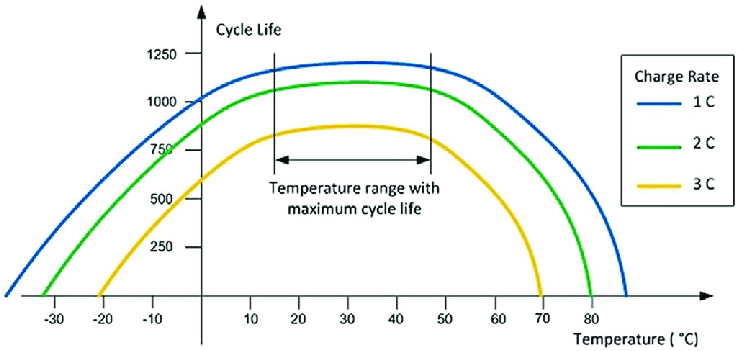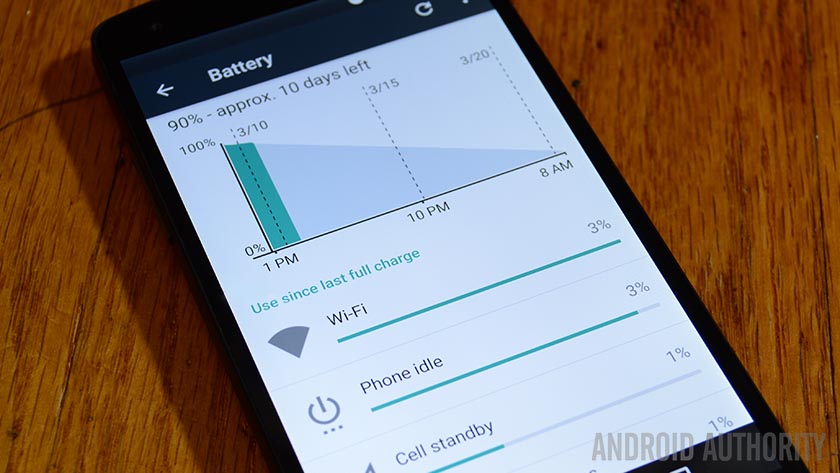
Smartphone users — casual and enthusiast alike — are forever in search of longer battery life. While fast charging keeps us topped up every day, the absence of replaceable batteries means eventually the lithium-ion cells enclosed in our phones are going to age and deteriorate.
If you've held onto a phone for a year or more, you've probably noticed the battery doesn't seem to last as long as it did when it was brand new. Two years down the line and many phones struggle to make it through the day on a single charge. Holding onto a phone past three years can even spell trouble for system stability.
Unfortunately, battery capacity inevitably declines with age. However, there are things you can do to prolong the life of your battery and handset. If you've ever wondered what the best way to charge your battery is, here are some scientifically proven tips for maximizing battery life.
Partial charging is the way to go
One particularly persistent battery myth is that you need to occasionally fully discharge and recharge to erase "battery memory." This couldn't be more wrong for lithium-ion batteries. It's a leftover myth from lead-acid cells, and is actually quite undesirable to charge your modern smartphone in this way.
Partial charging is just fine for lithium-ion batteries and can actually have some positive benefits for cell longevity. To understand why, it's important to appreciate how a battery charges. When closer to empty, Li-ion batteries draw in a constant current and operate at a lower voltage. This voltage gradually increases as the cell charges up, leveling off at around a 70 percent charge before the current begins to fall until the capacity is full.
Partial charging is just fine for lithium-ion batteries and even has some positive benefits.
Importantly, operating at a low voltage is good for a battery's lifespan, increasing the number of available charging cycles before you'll start to see a major reduction in capacity. Roughly speaking, every 0.1V decrease in cell voltage doubles the cycle life, according to Battery University. Therefore, charging up your phone in that 30 to 80 percent range keeps the voltage lower and prolongs the battery lifespan.

Battery University Lower battery voltages help prolong capacity over time. Green: lower voltage charging for first ~65%. Yellow: Start of constant voltage. Red: Long period of high voltage charging for last 15%.
Furthermore, the "depth-of-discharge" has a similar effect on the total discharge cycles before battery capacity drops off. This refers to the amount the battery used up in between charges. Smaller discharges, in the region of 60 percent rather than 100 percent between refueling can double the lifespan of your battery, and only using 20 percent can double the lifetime again.
Small but regular top-ups are much better for Li-ion batteries than long full charge cycles.
Using up just 20 percent of your battery between charges isn't going to be practical for most people, but topping up when you've used about half will see a notable improvement in your battery life over the long term, especially if you avoid charging up to full each time too. The bottom line is that small regular top-ups are much better for Li-ion batteries than long full charge cycles.

Docks are convenient but you shouldn't leave a device in one once it has hit 100% charge.
Avoid idle charging
Charging overnight or in a cradle during the day is a very common habit, but it's not recommended for several reasons (the old "overcharging" myth isn't one of them). First, continuous trickle charging of a full battery can cause plating of the metallic lithium, which reduces stability in the long term and can lead to system-wide malfunctions and reboots. Secondly, it leaves the battery at the higher stress voltage when at 100 percent, as we just mentioned above. Third, it creates excess heat caused by wasted power dissipation.
Continuing to charge when a phone is at 100% is a recipe for voltage and temperature stress.
Ideally, a device should stop charging when it reaches 100 percent battery capacity, only turning the charging circuit back on to top up the battery every now and again — or at the very least reducing the charging current to very small amounts.
I tested a few phones charged to 100 percent and they continued to pull up to half an amp and sometimes more from the wall outlet. Turning the smartphones off doesn't make a difference in many cases, with only the LG V30 dropping down to below 20mA when off and still plugged in. Most phones hover between 200 and 500 mA.
- At 100 percent charge, this phone still draws 200mA to keep the battery topped up.
- Using the phone increases the current draw, inducing a mini cycle in the battery.
A final point worth mentioning is parasitic load. This occurs when the battery is being drained significantly at the same time as being charged, such as watching a video or gaming while charging.
Parasitic loads are bad for batteries because they distort the charging cycle and can induce mini cycles, where part of the battery continually cycles and deteriorates at a faster rate than the rest of the cell. Worse still, parasitic loads occurring when a device is fully charged also induce higher voltage stress and heat on the battery.
Gaming or watching videos while charging is bad because they distort charging cycles.
The best way to avoid parasitic loads it to turn your device off while charging. But it's probably more realistic to keep the workload very light while the device is plugged in, leaving it to idle most of the time. Remember to unplug it once the battery is topped up enough.

Heat is the enemy of long battery life
Along with all of the above, temperature is an equally key contributor to battery longevity. Just like high voltages, high temperatures stress the battery and make it lose capacity far more quickly than when kept at lower temperatures.
A cell kept between 25 – 30 degrees Celsius (77 – 86 degrees Fahrenheit) should retain around 80 percent of its capacity after the first year even when cycling from empty to full charge. Battery capacity will be higher than this after a year if smaller periodic charging cycles are used. Raising the temperature to 40C (104F) sees this fall to just 65 percent capacity after the first year, and a 60C (140F) battery temperature will hit this marker in as little as three months.

Researchgate The ideal temperature to maximize battery cycle life is between 20 and 45C
A battery dwelling in a full state-of-charge exposed to a high temperature is the worst of all worlds and the number one thing to avoid when charging your phone. So no leaving your phone under your pillow to charge at night or plugged in on the dashboard of your car on a hot day.
Fast charging technologies are a contentious issue here, as the higher current and voltages can definitely lead to a hotter device while charging. Fast charging was never really envisioned for full cycle charging though, instead, it's a fast way to top up your phone quickly to get it back in your hands. Leaving your phone to quickly charge up for 15 to 20 minutes won't lead to major overheating problems, but I certainly don't recommend using them for overnight charging.
Bringing this all together
Lithium-ion battery technology is well understood these days, but bad habits and myths still permeate public consciousness. While most of these habits won't severely negatively impact your phone's battery life in the medium term, the decline in removable phone batteries means we should take extra precautions to maximize our phone's battery life and cell longevity.
What's the best way to charge your smartphone?
- Avoid full cycle (zero-100 percent) and overnight charging. Instead, top-up your phone more regularly with partial charges.
- Ending a charge at 80 percent is better for the battery than topping all the way up to 100 percent.
- Use fast charging technologies sparingly and never overnight.
- Heat is the battery killer. Don't cover your phone when charging and keep it out of hot places.
- Turn your phone off when charging, or at least don't play games or watch videos to avoid mini cycles.
from Android Authority https://ift.tt/2NrMKSI
via IFTTT




Aucun commentaire:
Enregistrer un commentaire